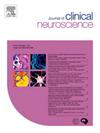Telehealth interventions for stroke management and rehabilitation in low- and middle-income countries: A scoping review
IF 1.9
4区 医学
Q3 CLINICAL NEUROLOGY
引用次数: 0
Abstract
Introduction
The burden of stroke is higher in low- and middle-income countries (LMICs) than in high-income countries due to the lack of stroke care centers, stroke specialist, and rehabilitation access. One way to increase access to stroke care in LMICs is through the use of telehealth.
Material & method
We performed a scoping review to summarize the evidence on telehealth in LMICs. We searched Medline, SCOPUS, and Web of Science through February 18th, 2022. Reviewers screened for studies reporting on health outcomes following telehealth interventions (imaging, thrombolysis, and rehabilitation) in LMICs. We included all study designs.
Results
Out of 259 studies, 10 studies met the eligibility criteria. Nine reported on functional or disability measures, 6 reported on cerebral infarction or intracerebral hemorrhage, 5 reported on door-to-needle time to thrombolysis, and 6 reported on mortality rate. Out of 9 studies, 8 reported that the use of telehealth for stroke management and rehabilitation in LMICs has led to a decrease in the degree of post-stroke disability. However, the comparison group may have received no rehabilitation treatment at all in LMICs. All 5 studies that measured administration of thrombolytic therapy in respective telehealth interventions were within the recommended 3-hour time window. Studies with a comparison arm found that there was no significant difference in mortality and cerebral infarction/intracerebral hemorrhage rates between telehealth and control.
Conclusion
Evidence from this review suggests that telehealth may improve post-stroke disability and facilitate the timely administration of thrombolytics therapy within the 3-hour window by allowing remote access to distant tertiary stroke care center in situations where it would otherwise be delayed in LMICs due to logistical barriers such as an extended travel time. Further research using randomized and quasi-experimental studies are needed in LMICs to determine the overall effectiveness of telehealth intervention for stroke management and rehabilitation.
中低收入国家中风管理和康复的远程保健干预措施:范围综述。
导言:由于缺乏卒中治疗中心、卒中专家和康复途径,中低收入国家(LMICs)的卒中负担高于高收入国家。在中低收入国家,增加卒中治疗机会的方法之一是使用远程医疗:我们进行了一次范围界定综述,总结了低收入国家远程医疗的相关证据。截至 2022 年 2 月 18 日,我们检索了 Medline、SCOPUS 和 Web of Science。审稿人筛选了报告低收入国家远程医疗干预(成像、溶栓和康复)后健康结果的研究。我们纳入了所有的研究设计:在 259 项研究中,有 10 项研究符合资格标准。其中 9 项报告了功能或残疾测量结果,6 项报告了脑梗塞或脑出血情况,5 项报告了溶栓从进门到进针的时间,6 项报告了死亡率。在 9 项研究中,有 8 项研究报告称,在低收入和中等收入国家使用远程医疗进行卒中管理和康复降低了卒中后的致残程度。然而,在低收入国家,对比组可能根本没有接受康复治疗。所有 5 项研究在各自的远程医疗干预中测量了溶栓治疗的实施时间,均在建议的 3 小时时间窗内。有对比组的研究发现,远程保健与对照组在死亡率和脑梗塞/脑出血发生率方面没有显著差异:本综述的证据表明,远程医疗可改善卒中后的残疾状况,并有助于在 3 小时时间窗内及时进行溶栓治疗,因为远程医疗可使患者在远距离接受卒中三级医疗中心的治疗,而在低收入和中等收入国家,由于物流障碍(如旅行时间延长),这种治疗可能会延迟。需要在低收入国家进一步开展随机和准实验研究,以确定远程医疗干预对中风管理和康复的总体效果。
本文章由计算机程序翻译,如有差异,请以英文原文为准。
求助全文
约1分钟内获得全文
求助全文
来源期刊

Journal of Clinical Neuroscience
医学-临床神经学
CiteScore
4.50
自引率
0.00%
发文量
402
审稿时长
40 days
期刊介绍:
This International journal, Journal of Clinical Neuroscience, publishes articles on clinical neurosurgery and neurology and the related neurosciences such as neuro-pathology, neuro-radiology, neuro-ophthalmology and neuro-physiology.
The journal has a broad International perspective, and emphasises the advances occurring in Asia, the Pacific Rim region, Europe and North America. The Journal acts as a focus for publication of major clinical and laboratory research, as well as publishing solicited manuscripts on specific subjects from experts, case reports and other information of interest to clinicians working in the clinical neurosciences.
 求助内容:
求助内容: 应助结果提醒方式:
应助结果提醒方式:


